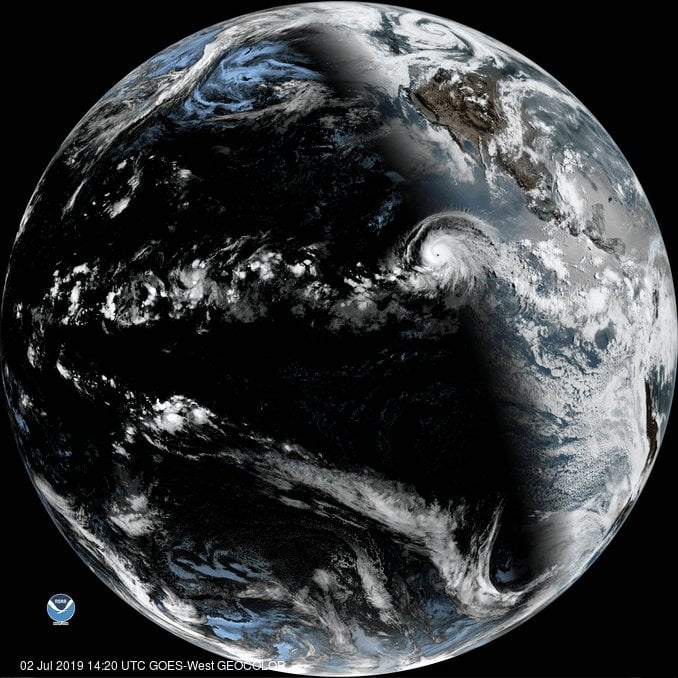
A total solar eclipse had to share the stage with a Category 4 hurricane today — and NOAA satellite captured it all.
Hurricane Barbara is the second hurricane of the year in the eastern Pacific, where the 2019 season is off to an unusually slow start.
Barbara had top winds of 140 mph on Tuesday afternoon (Central time) but fortunately was no threat to land.
Here’s Barbara:

But Barbara wasn’t the only thing going in the Pacific on Tuesday.
The powerful hurricane also coincided with a total solar eclipse.
The eclipse was only visible for some those in South America, but the GOES-West satellite tracked the eclipse shadow across the Pacific as Barbara churned to the north on Tuesday.
Here’s the full loop, courtesy of the National Weather Service:
Ok, so we had to take a crack at showing this loop as well. Major Hurricane #Barbara and a total solar eclipse traversing the Pacific Ocean! Just wow… #arwx
According to NASA most of South America got to see at least a partial eclipse.
However, parts of Chile and Argentina were treated to a full solar eclipse, where the moon blocked out nearly all of the sun’s light.
North America missed out on this eclipse this time. Those closer to home may well remember the “Great American Eclipse” in 2017, where parts of the United States were treated to a full solar eclipse and the “path of totality” crossed from coast to coast:

According to NASA we’ll have to wait a while for the next big eclipse. An annular solar eclipse will be coming on Oct. 14, 2023. An annular solar eclipse is when the moon covers most but not all of the sun and leaves a “ring of fire” around the moon.
That eclipse will be visible from California to Florida.

